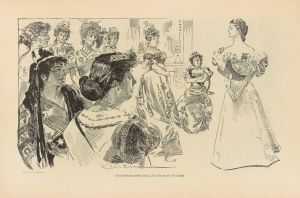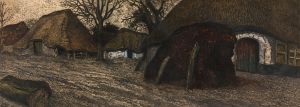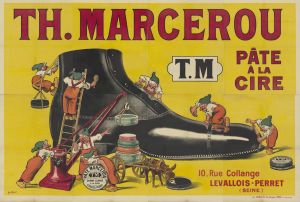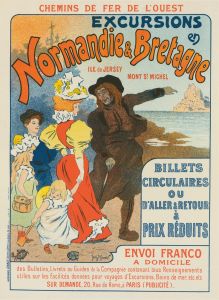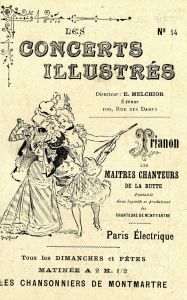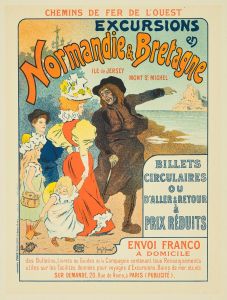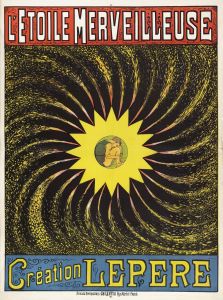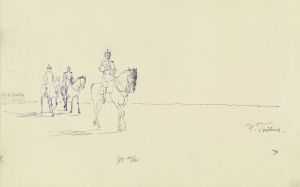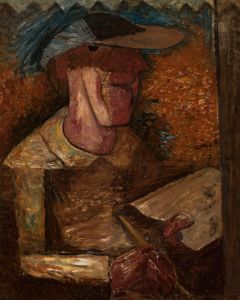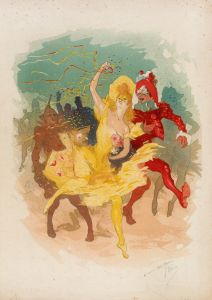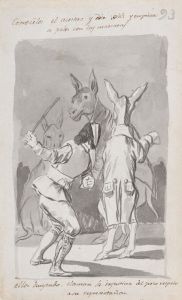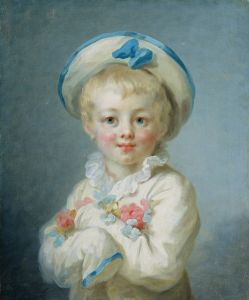
Bullier. Tous les jeudis Bal masqué, fête de nuit. Samedis et dimanches Bal
A hand-painted replica of Georges Meunier’s masterpiece Bullier. Tous les jeudis Bal masqué, fête de nuit. Samedis et dimanches Bal, meticulously crafted by professional artists to capture the true essence of the original. Each piece is created with museum-quality canvas and rare mineral pigments, carefully painted by experienced artists with delicate brushstrokes and rich, layered colors to perfectly recreate the texture of the original artwork. Unlike machine-printed reproductions, this hand-painted version brings the painting to life, infused with the artist’s emotions and skill in every stroke. Whether for personal collection or home decoration, it instantly elevates the artistic atmosphere of any space.
Georges Meunier was a French artist known for his contributions to the world of poster art during the late 19th and early 20th centuries. He was part of the vibrant artistic scene in Paris, a city that was at the forefront of the Art Nouveau movement. Meunier's work is characterized by its dynamic compositions, vibrant colors, and the ability to capture the essence of Parisian nightlife and entertainment.
"Bullier. Tous les jeudis Bal masqué, fête de nuit. Samedis et dimanches Bal" is one of Meunier's notable works, created as a poster to advertise the events at the Bullier Ballroom. The Bullier Ballroom, also known as "La Closerie des Lilas," was a famous dance hall located in the Montparnasse district of Paris. It was a popular venue for social gatherings, dances, and masquerade balls, attracting a diverse crowd that included artists, writers, and bohemians.
The poster itself is a vivid depiction of the lively atmosphere that characterized the Bullier Ballroom. Meunier's use of bold colors and flowing lines captures the energy and excitement of the events held there. The poster advertises the regular masquerade balls that took place every Thursday, as well as the dances on Saturdays and Sundays. These events were a significant part of Parisian social life, offering a space for people to gather, dance, and enjoy the vibrant cultural scene of the city.
Georges Meunier's work, including this particular poster, is an example of the broader trend of poster art that flourished in Paris during this period. Artists like Meunier, Jules Chéret, and Henri de Toulouse-Lautrec played a crucial role in elevating the status of the poster from mere advertisement to an art form in its own right. Their works were not only functional but also aesthetically pleasing, often becoming collectible items.
The Art Nouveau movement, with its emphasis on decorative arts and the integration of art into everyday life, provided the perfect backdrop for the development of poster art. Meunier's posters, with their elegant designs and attention to detail, exemplify the principles of this movement. They reflect the optimism and creativity of the Belle Époque, a period marked by cultural flourishing and technological advancements.
In summary, Georges Meunier's poster "Bullier. Tous les jeudis Bal masqué, fête de nuit. Samedis et dimanches Bal" is a testament to the vibrant social and cultural life of Paris during the late 19th century. It captures the spirit of the Bullier Ballroom and the broader artistic trends of the time, serving as both an advertisement and a work of art. Meunier's contribution to the world of poster art remains significant, as his works continue to be appreciated for their artistic merit and historical value.






